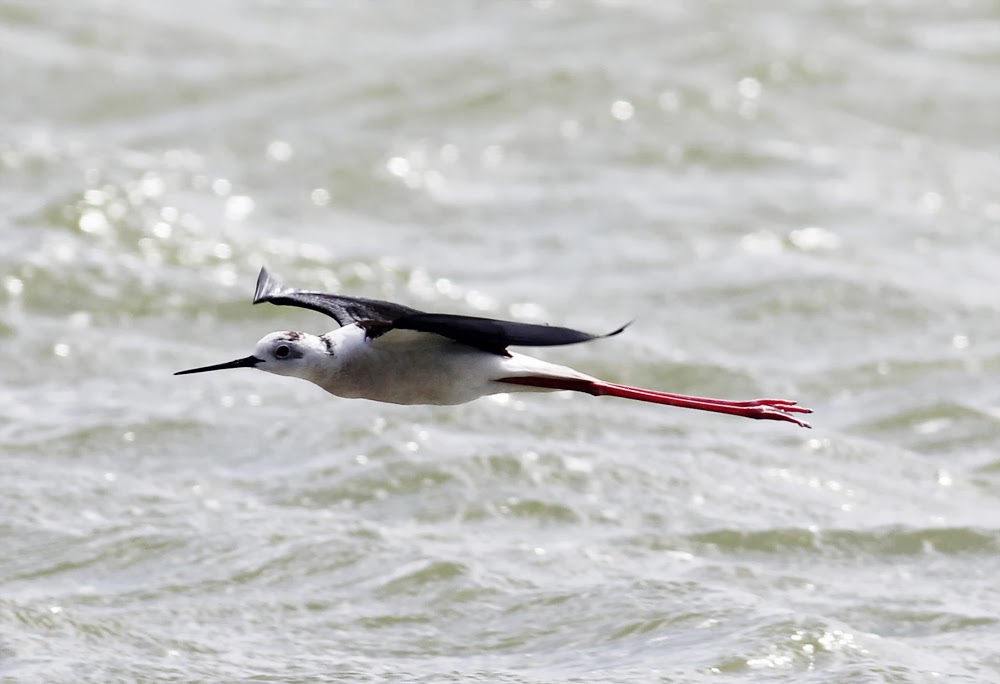After a few days absence I finally found my way to Conder Green this morning. The sun shone brightly and it proved to be a fine morning for a leisurely look through the waders on offer.
I spotted a Little Stint feeding next to a Snipe, the Snipe towering above the tiny wader, the stint that has a fitting scientific name of Calidris minuta. Although I could find just the one stint there were more Snipe feeding in the creeks and the pool, a total of 14 in all. Other waders - 120+ Redshank, 2 Spotted Redshank, 4 Greenshank, 2 Common Sandpiper, 8 Lapwing and 6 Curlew.
At the pool a Kingfisher fished from the island rocks, splashing in and out of the water, 12 Pied Wagtail, 1 Grey Wagtail, 2 Wigeon, 1 Cormorant, 3 Little Egret, 1 Grey Heron and just 6 Little Grebe.
All seemed quiet so I drove to Glasson Dock where another Kingfisher sat on the edge of the sunken boat, its head turning left and then right before spotting the approaching car. Off it went in the direction of the canal and into a slight mist that hung over the water, and I lost it from view. Conder Green and Glasson Dock are Kingfisher hot spots in the recent months of fine weather and productive fishing.
There was little else, the 30 or so Tufted Ducks distant on the far side, so I took a walk along the cycle path and back towards Conder Green and hoped for an autumn goodie. Maybe I didn’t look hard enough or perhaps the fine weather is not conducive to raining small passerines into the bushes I bashed. Whatever, all I found were finches and a mixed flock of titmice, mainly 18 or more Long-tailed Tits and a couple of Meadow Pipits, so no obvious signs of migration.
It’s difficult to miss the flock of 100+ Goldfinches because they stick so close and consequently make so much chattering noise. There are Linnets mixed in but their numbers dwarfed by the Goldfinches.
Goldfinch
Linnet
On a limited budget of time I gave Fluke Hall a quick shot, maybe too hurried as the best I could muster proved to be a Goldcrest. There was and an obvious build-up of Woodpigeons on the cut wheat field, in excess of 140 of them clattering off through the trees when disturbed by a tractor.
It was mid-morning and by now quite warm, the reason perhaps that four Buzzards appeared from the direction of the marsh where they may have crossed the bay. They circled around for a minute or two before continuing south and towards Pilling village.
Buzzard - Buteo buteo
Buzzard - Buteo buteo
Buzzard - Buteo buteo
In 2014 I’ve not been seeing as many Buzzards as in recent years and I hope it’s not because of more persecution, like this BBC story from 2nd October where 6 Buzzards have mysteriously disappeared.
Hands off our Buzzards you morons!
Just as well I made hay today because the forecast for weekend looks dire. But as ever Another Bird Blog will be looking for a sunny day and keeping an eye on those Buzzards.
Linking today to Anni's Blog and Eileen's Saturday Blog.
Hands off our Buzzards you morons!
Just as well I made hay today because the forecast for weekend looks dire. But as ever Another Bird Blog will be looking for a sunny day and keeping an eye on those Buzzards.
Linking today to Anni's Blog and Eileen's Saturday Blog.



























































.jpg)












